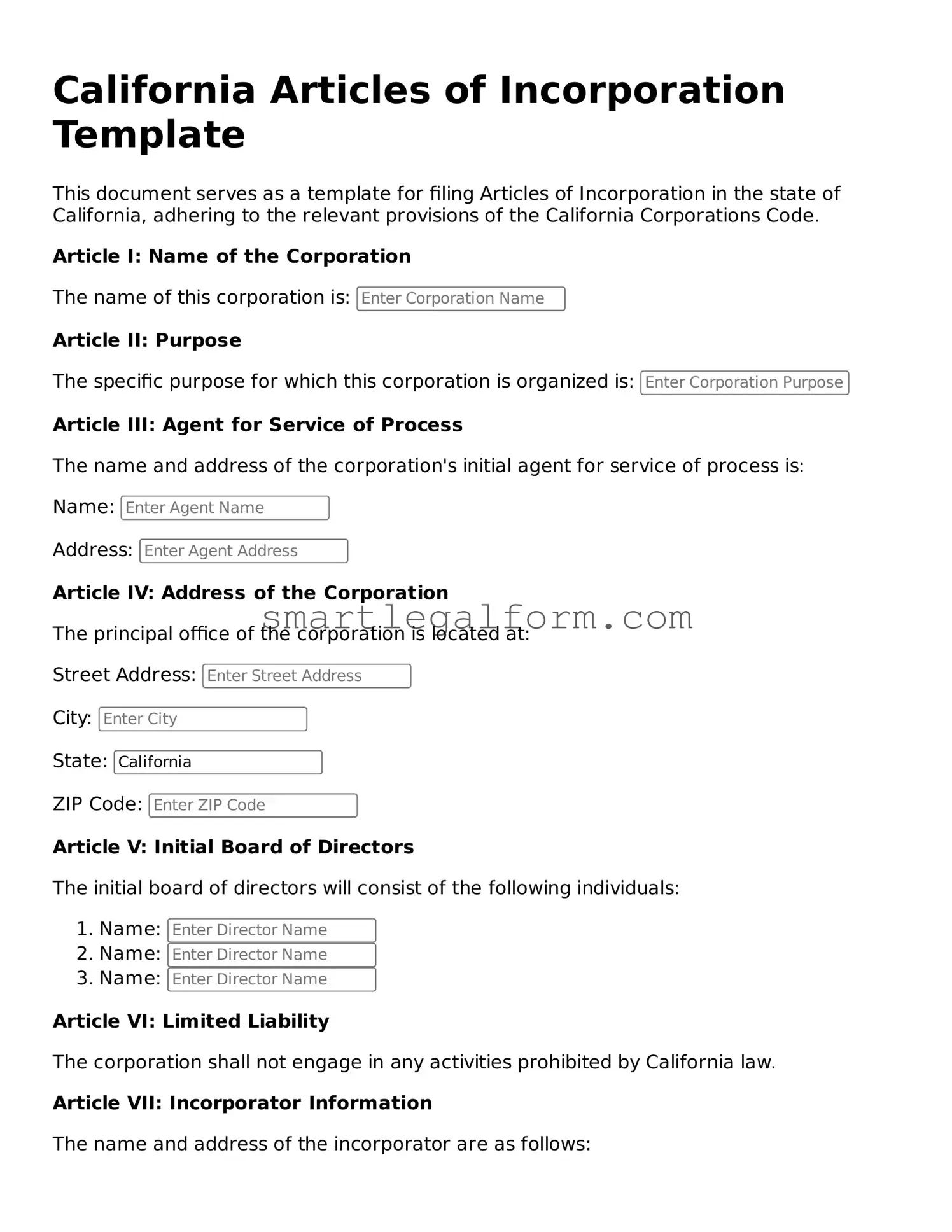Printable California Articles of Incorporation Document
The California Articles of Incorporation form is a crucial document used to establish a corporation in the state of California. This form outlines essential information about the corporation, including its name, purpose, and the details of its initial directors. Completing this form is the first step toward legally forming a corporation, ensuring compliance with state regulations.
Ready to take the next step? Fill out the form by clicking the button below!
Fill Out Your Form Online
